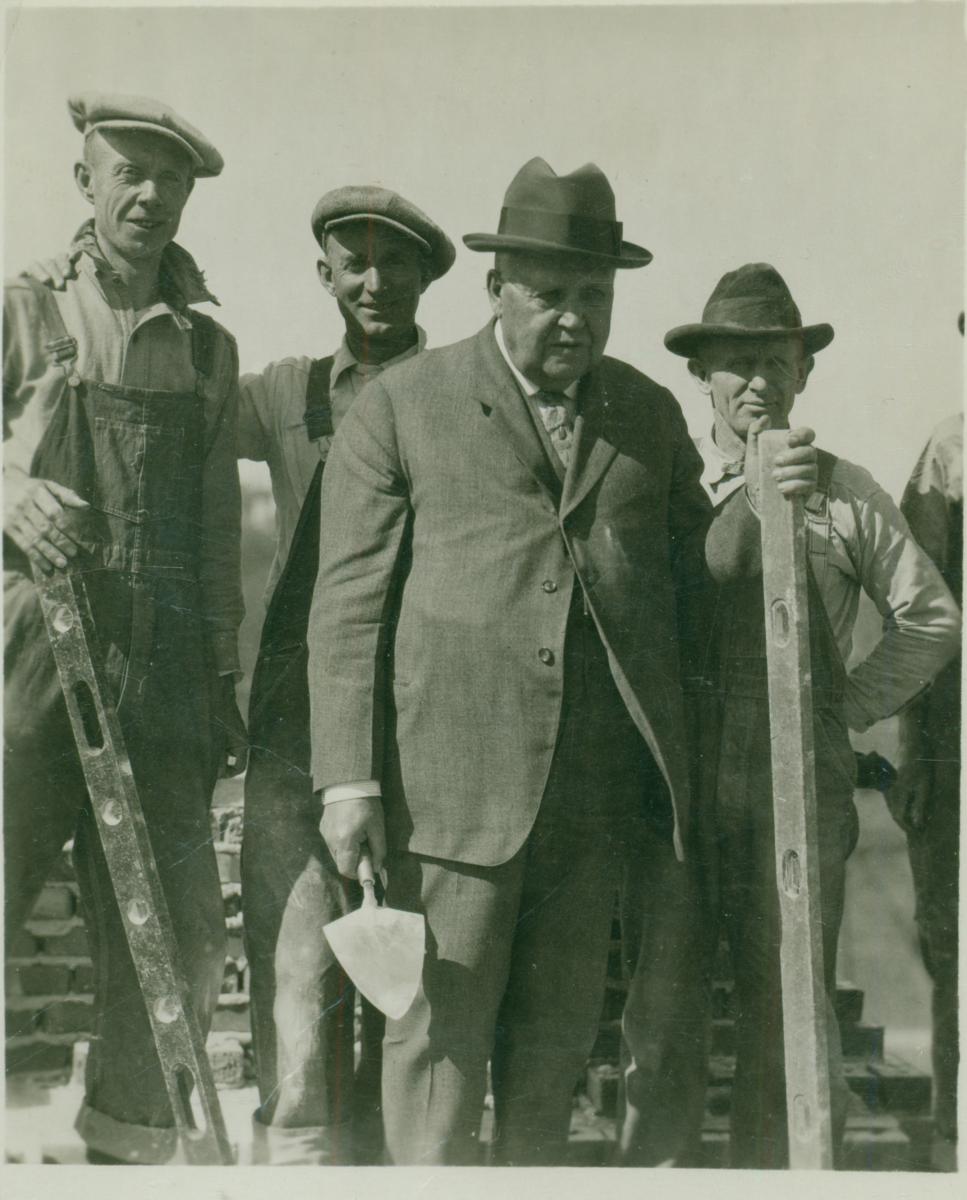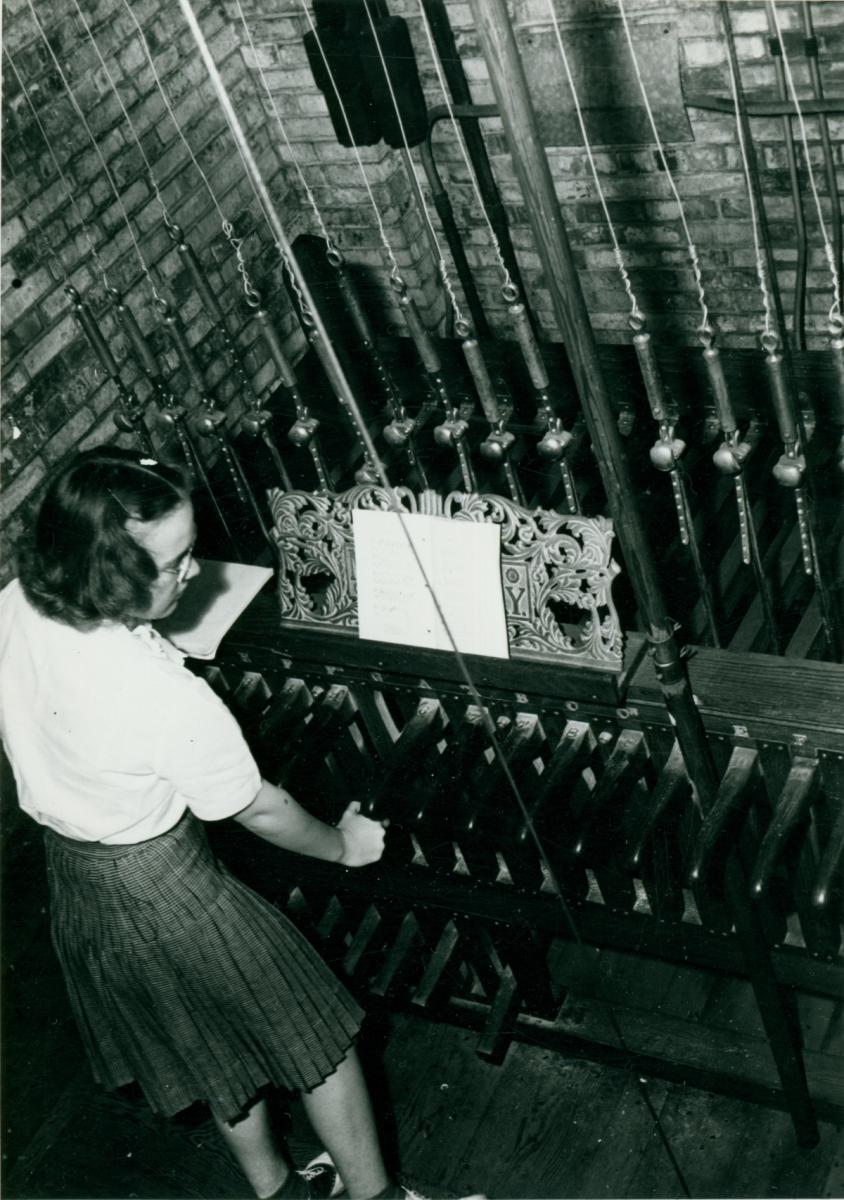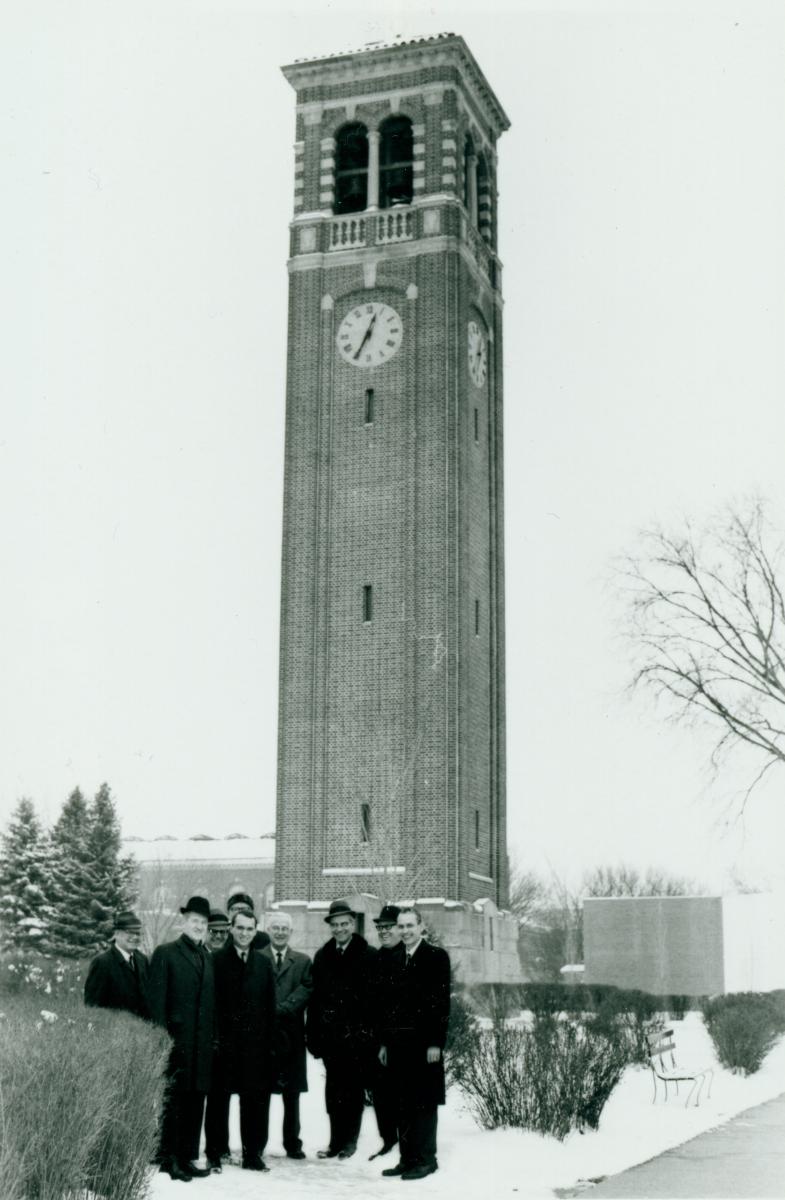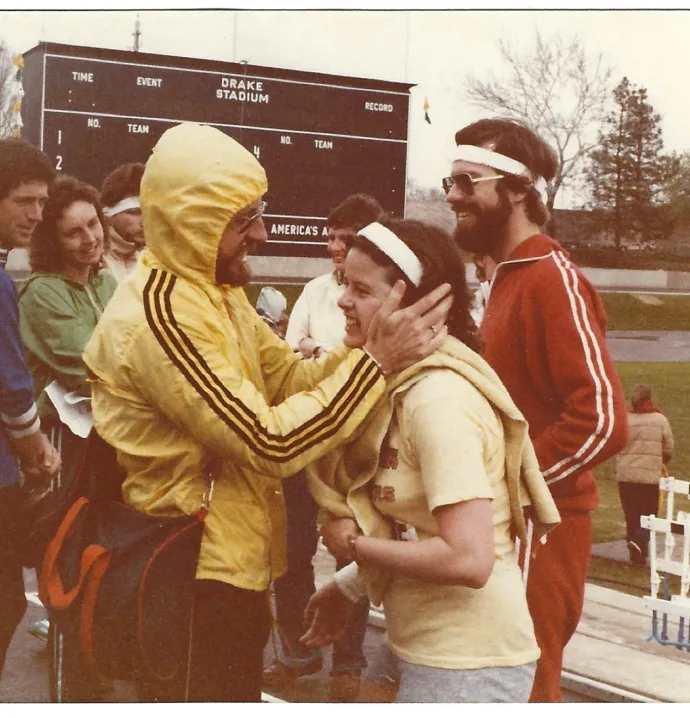Campanile renovations are an opportunity to revisit history
Campanile renovations are an opportunity to revisit history
UNI’s iconic Campanile and its carillon bells were built in the 1920s during the tenure of then-university president Homer Seerley. Completed in 1926, the $60,000 Campanile bell tower was built as a memorial following World War I. Its opening coincided with UNI’s 50th anniversary and Seerley’s 40th year as university president.
These fascinating historical facts and so many others can be found in the Rod Library’s Special Collections and University Archives, which contain more than 4,500 linear feet of historically valuable materials relating to UNI that date all the way back to the 1870s.
The archives consist of more than 100,000 documents, photographs, catalogs, news articles, yearbooks and more, as well as special collections that include rare books, manuscripts, American fiction and other texts.
The Campanile has become one of the most recognizable symbols of the UNI campus, and, as its 100th anniversary approaches in 2026, the university is taking measures to ensure it will remain standing tall for at least another century for future Panthers to enjoy.
Several events will be held on UNI’s campus the first week of May to celebrate the return of the bells, including a pop-up exhibit curated by the Rod Library’s Special Collections & University Archives.
“We will have some historic materials, such as photographs and newspaper articles from early events related to the Campanile, that we have within the university archives,” said Jaycie Vos, special collections coordinator and university archivist.

President Seerley with masons in 1924
“We thought it would be fun to have some of these items out for people to see and hold and look at,” she added. “Most of the time our materials stay in the archives and it's probably safe to say that most people may not even know our archives exist or anything about the extent of our collection, so this was another way to let people know that we are here and that we have lots of cool stuff related to these really big, iconic things on campus.”

Woman playing in 1947
In addition to providing some historical context to the events surrounding the Campanile restoration and the return of the carillon bells, Vos said she hopes the display will encourage UNI students, faculty, staff and members of the public to explore what the archives and special collections have to offer.
It’s milestones like the Campanile’s restoration that highlight the importance of collecting and maintaining an archive like the one found at the Rod Library.
“We have materials that pretty much reflect any part of social and cultural history from the university's founding to the present,” she said. “So if you're interested in the Vietnam War and how it relates to UNI and the Cedar Falls community for example, you can probably find newspaper articles in the student paper where they're sharing their opinions about it, and you can see how people on campus participated or reacted.”
The archives also offer a look into Iowa’s history.
“We have a lot of items related to Iowa’s history and we also have items related to Iowa authors and other talent,” Vos said. “So for example, Robert James Waller, who wrote ‘Bridges of Madison County,’ was a professor at UNI.”
Additionally, the UNI Archives is home to a variety of special collections, including a rare books collection, a manuscripts collection and other resources that are available to use if people are interested in local and regional history.
“We also have a lot of materials that show the history of bookmaking over time and how that technology changed, and we have some materials that go back to the 1600s that are printed on really interesting materials like vellum,” she added. “You can see how bookbinding and printing has changed over time, and those materials cover a range of topics, like religion, great works of literature, women throughout history and so many other things. The archives also has a collection of historical documents and manuscripts related to state and national politics, civic organizations and family papers from Iowan families as they tie to the university and the Cedar Valley.”
One such collection of family papers is a series of letters written between Waterloo family members during World War II.
“It’s stuff like that - the letters, the old photographs, the materials that give you a glimpse into the stories of the people who lived in this area before us, that I think are my favorite type of materials that we collect,” Vos said. “And then to be able to use those materials to help students with their research, that’s something I really enjoy being able to do.”
It’s also this preservation of history that gives us a better understanding of where we are and how we got here, she added.
“Regardless of what it is we are researching or talking about, I think this is really important to understand what actually happened and to be able to go to sources and say ‘Here's the evidence of this event unfolding or this decision being made,’” Vos said. “As a society, I think it's really helpful to understand what came before and what happened, so we can better understand what is currently happening in the world around us.”
Read up on Campanile history on the Special Collections & University Archives website.

President Maucker and others at the base of the Campanile, 1968




